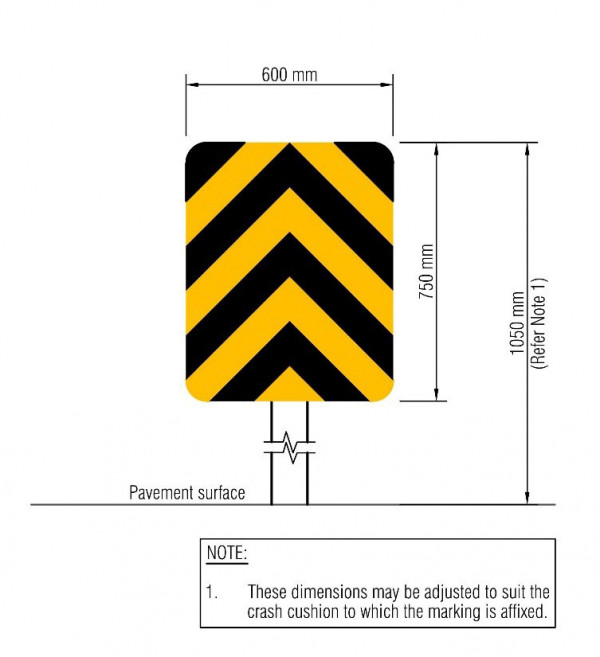Where other hazards and obstructions are located on a median or traffic island, further marking of the hazard should be considered:
- where the surface of the hazard which faces approaching traffic should be white up to a height of 1.7m above road level. The W14-1 Diverge sign may be used, but due to the obstruction they can pose to visibility, should only be used if other cues fail. Refer to Table 6‑1 for direction on use;
Table 6‑1
- where the hazard is not bordered by kerbing, or the hazard is bordered by kerbing and the kerb face is less than 3m from the hazard;
- where marking of the hazard is not required where barrier protection has been provided;
- where the hazard constitutes the right hand hazard of a pair of end hazards (eg an underpass or tunnel) Width markers should be installed as described in bridge end marker posts at road safety barriers, bridges, and other width restrictions;
Bridge end marker posts at road safety barriers, bridges, and other width restrictions
and
- where the hazard is formed of a road safety barrier end terminal or similar feature:
- where approaching traffic must keep to the left of it, an R3-13 Keep left – single disc or R3-13.1 Keep left – double disc sign should be installed unless other installations negate the need for this; and
- where approaching traffic may pass to either side of it eg at a motorway off ramp, the nose cone or leading face should be marked with 100mm wide black and retroreflective yellow stripes as shown in Figure 6‑3.
Figure 6‑3: Signage for a road safety barrier end terminal or similar feature in a diverge

View larger image [JPG, 80 KB]
However, in all cases of hazards on a median, consideration should be given to eliminating the hazard or protecting road users from the hazard by means of a road safety barrier.
